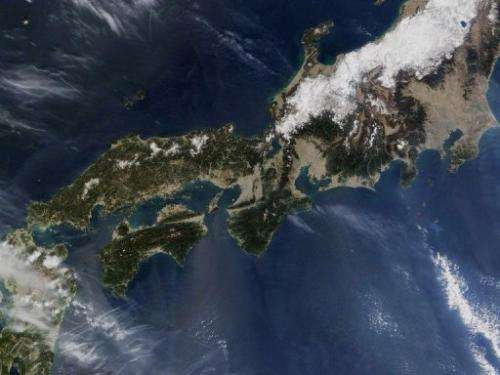Japan extracts 'fire ice' gas from seabed

Japan said Tuesday it had successfully extracted methane hydrate, known as "fire ice", from its seabed, possibly unlocking many years' worth of gas for the resource-starved country.
In what they are claiming as a world first, a consortium is drilling for the hydrate, a fossil fuel that looks like ice but consists of very densely-packed methane surrounded by water molecules, one kilometre (3,300 feet) below sea level.
The solid white substance burns with a pale flame, leaving nothing but water. One cubic metre of it is estimated to contain many times the equivalent volume of methane in gas form.
The consortium, led by Japan Oil, Gas and Metals National Corporation, began initial work in February last year and on Tuesday started a two-week experimental production, an economy, trade and industry ministry official said.
"It is the world's first offshore experiment producing gas from methane hydrate," the official said, adding that the team successfully collected methane gas extracted from the half-frozen substance.
Under the project, the consortium is to separate methane—the primary component of natural gas—from the solid clathrate compound under the seabed using the high pressures available at depth, officials said.
A huge layer of methane hydrate containing 1.1 trillion cubic metres (38.5 trillion cubic feet) in natural gas—equivalent to Japan's consumption of the gas for 11 years—is believed to lie in the ocean floor off the coast of Shikoku island, western Japan, the officials said.
"We aim to establish methane hydrate production technologies for practical use by the fiscal 2018 year" ending March 2019, a consortium official said.
The move comes as resource-poor Japan has struck out in search of new energy supplies after it shut down its stable of nuclear reactors in the wake of 2011's tsunami-sparked nuclear crisis.
Japan switched off its atomic reactors for safety checks following the disaster that saw a wall of water hit the Fukushima plant, crippling its cooling systems and sending reactors into meltdown.
Only two of the nation's 50 reactors are now operating, with more stringent safety standards and political nervousness in the wake of the worst nuclear accident since Chernobyl in 1986 keeping the rest out of action.
This has meant energy costs have shot up for Japan as it has been forced to buy pricey fossil-fuel alternatives.
(c) 2013 AFP


















